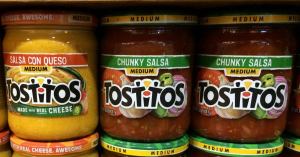The first packages of COVID-19 vaccines officially began shipping on Sunday, according to a report by The Associated Press. The drug from Pfizer and BioNTech made its way to distribution sites across the country in freezer-packed containers, offering some hope for an end to the coronavirus pandemic. While the roll-out is expected to take time, the promise of a finish line has many Americans rejoicing.
The U.S. Food and Drug Administration gave the Pfizer vaccine emergency use authorization on Friday, allowing the country to begin “the biggest vaccination effort in U.S. history.” Health care workers and nursing home residents will be the first to get the vaccine, which comes in two shots over a month. Reporters watched the first batches depart from the Pfizer facility in Portage, Michigan. Vials of the vaccine were packed into insulated boxes with dry ice, ensuring that they would stay at 94 degrees below zero Fahrenheit.
Videos by PopCulture.com
Pfizer workers were reportedly dressed in fluorescent yellow clothing including hard hats and gloves as they packed these momentous shipments up. They were sent to the Gerald R. Ford International Airport in Grand Rapids, Michigan where they were loaded onto a cargo plane. Airport officials said that there was a “jubilant” atmosphere as they sent the medication off.
The vaccine is reportedly shipping via the USPS and FedEx Express, with GPS-enabled sensors to keep track of their locations. An estimated 3 million doses left Pfizer on Sunday, with more to come shortly. Federal officials said that shipments will be staggered for efficiency.
The plan is for 145 distribution centers to receive their share of the coronavirus vaccine on Monday, followed by another 425 centers receiving it on Tuesday. The last 66 shipments will reach their destination on Wednesday, and the layout of these distribution centers has been planned based on the adult population of each state.
The states themselves get to decide where the vaccine will go first. In California, for example, public health officials are reportedly prioritizing the hospitals that have the capacity to store this unique vaccine first. Health care workers will be vaccinated in the state along with high-risk populations.
In addition to the logistical challenges of distributing this vaccine quickly, public health officials are still fighting for public trust in the drug so that everyone will take it to achieve herd immunity. Hopefully this first round of vaccinations will go smoothly enough to encourage others to accept the drug and end the pandemic by the summer of 2021.





